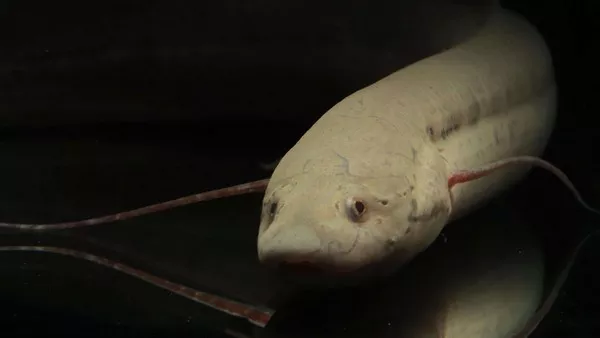The Australian lungfish (Neoceratodus forsteri) is a fascinating and ancient species that has captured the interest of biologists and nature enthusiasts for centuries. One of the most intriguing aspects of this fish is its ability to breathe both underwater and in air, a trait shared by only a few other fish species. In this comprehensive article, we will explore the unique adaptations of the Australian lungfish that enable it to breathe underwater, its lung-like structure, and its fascinating behavior.
The Australian Lungfish: An Ancient Survivor
1. Evolutionary History
The Australian lungfish is considered one of the oldest surviving fish species, dating back to the time of the dinosaurs. Fossil evidence suggests that lungfishes have remained relatively unchanged for over 100 million years.
2. Endemic to Australia
As the name suggests, the Australian lungfish is native to the freshwater rivers and streams of Australia, primarily found in the Burnett and Mary Rivers in Queensland.
The Adaptation for Dual Respiration
1. Lungs and Gills: The Best of Both Worlds
One of the most remarkable features of the Australian lungfish is its ability to breathe both in water and in the air. This dual respiration system allows the fish to survive in environments with fluctuating water levels or even during periods of drought when water levels are low.
2. Gills for Underwater Breathing
Like most fish, the Australian lungfish possesses gills that extract oxygen from the water. These gills are highly efficient at extracting dissolved oxygen from the water and supplying it to the fish’s bloodstream.
3. Primitive Lungs for Air Breathing
In addition to gills, the Australian lungfish has evolved a unique adaptation known as a primitive lung. This lung-like structure allows the fish to breathe atmospheric air directly, similar to how land-dwelling vertebrates breathe.
4. Aerial Breathing Behavior
When water levels are low or when the lungfish needs additional oxygen, it swims to the surface and extends its mouth above the waterline to gulp air. The lung-like structure absorbs oxygen from the inhaled air and provides an additional source of oxygen for the fish.
The Aestivation Behavior
1. Surviving Extreme Conditions
The Australian lungfish exhibits a fascinating behavior known as aestivation, which helps it survive in extreme environmental conditions, such as prolonged droughts.
2. Burying Themselves in Mud
During aestivation, lungfishes bury themselves in mud or moist soil, creating a cocoon-like structure called a mucous cocoon. This cocoon helps retain moisture and protect the fish from desiccation.
3. Breathing Air During Aestivation
While aestivating, the lungfish relies almost entirely on its lung-like structure to breathe air. This adaptation allows it to survive for extended periods without access to water.
Conservation Status and Conservation Efforts
1. Threats to the Australian Lungfish
Despite their ancient lineage, Australian lungfishes face various threats to their survival. Habitat destruction, water pollution, and altered river flow patterns are some of the significant threats affecting their populations.
2. Conservation Efforts
To protect this unique and ancient species, conservation efforts are underway. Authorities and conservation organizations are working to preserve the lungfish’s natural habitat, promote responsible land use practices, and raise awareness about the importance of conserving these ancient creatures.
Conclusion
The Australian lungfish is a living relic from a time long past, offering a glimpse into the ancient history of our planet. Its remarkable ability to breathe both underwater and in the air showcases the remarkable adaptability of nature. The lungfish’s unique lung-like structure and aestivation behavior have allowed it to survive in challenging environments for millions of years. However, this remarkable species faces modern threats that call for conservation efforts to ensure its survival for generations to come. By understanding and appreciating the adaptations of the Australian lungfish, we can deepen our appreciation for the diverse and incredible forms of life that share our planet.
Related Topics:


























